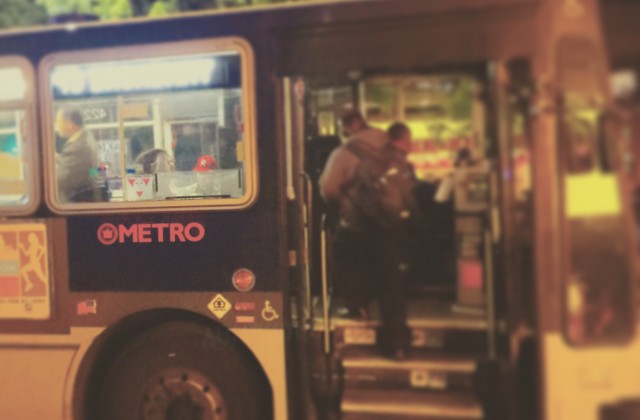More Discussion About Parking at City Hall
The City Council’s Planning Land Use and Sustainability (PLUS) Committee heard back from Department of Planning and Development (DPD) staff yesterday reporting on a review of parking policy. The report was added to microhousing legislation last year by Councilmember Rasmussen who, by all accounts, seems to be on something of a campaign to add more parking back to new housing development. However, based on body language and their responses other Councilmembers don’t seem as motivated. Fortunately, Rasmussen leaves the Council at the end of this year.
One important topic did come up, parking requirements for projects in areas served by frequent transit. We’ve written a letter urging the Council to clarify with legislation two issues, using averages to calculate transit headways and to allow use of the map that designated which areas the City already agrees have frequent transit service. We got one of those, the use of the map, in the recommendations of the report but not using an average. The use of averages was discussed supportively by staff and it seems that there is an understanding that the Hearing Examiner’s decision will need to be addressed with legislation.
This change to requiring builders to recalculate headways has lead to some bad outcomes, specifically projects becoming infeasible because of onerous parking requirements. A new Directors Rule won’t help these projects. So legislation is going to be needed and sooner rather than later.
Here’s the section of the report on the topic:
Clarify use of frequent transit service as the basis for parking regulations
POTENTIAL STRATEGIES
- Clarify the frequent transit service definition to accommodate slight variations in transit service, to use a functionally equivalent service standard (such as four bus trips per hour) to address minor gaps of one to three minutes greater than the currently defined 15 minutes.
- Include a map in the Land Use Code to define the area with frequent transit service, rather than require detailed calculations for each project.
- Explore other Code changes to recognize how transit service from multiple routes, heading in the same general direction, may be recognized as providing actual frequent transit service opportunities.
The proposed changes to frequent transit service would make the Code consistent with definitions used by King County Metro and SDOT for transportation planning purposes.
We will be watching this as it unfolds. If legislation is proposed it would likely be before the committee in the last half of this year.


